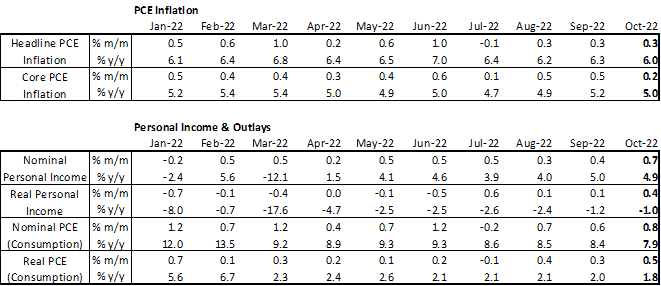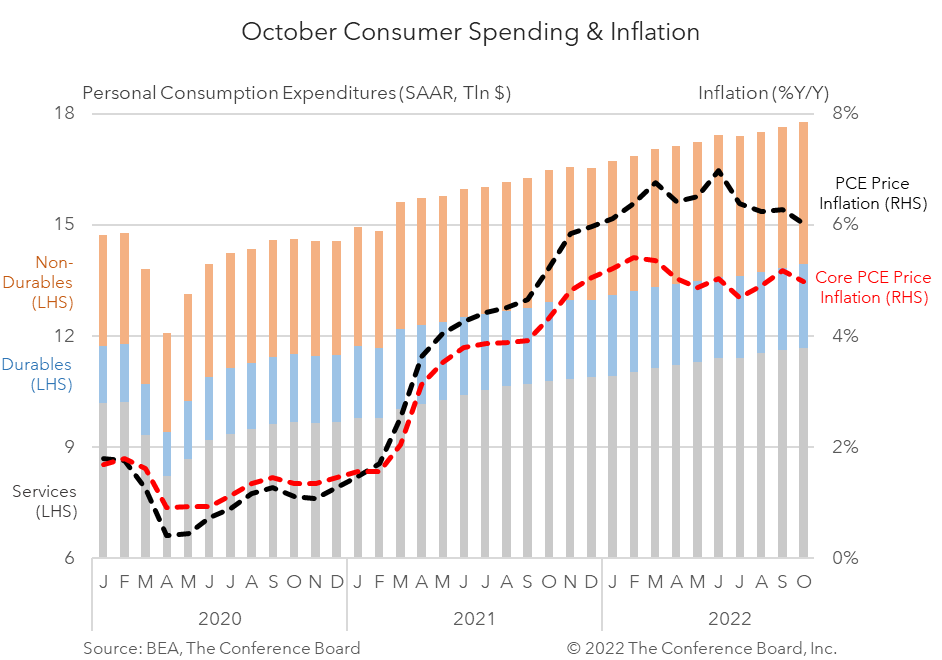October data show progress on inflation & spending
01 Dec. 2022 | Comments (0)
October Personal Income & Outlays data showed more progress on inflation and a resilient consumer. While higher energy prices kept month-over-month PCE inflation flat at 0.3 percent, core PCE inflation dipped to 0.2 percent. Additionally, both headline and core PCE inflation dropped in year-over-year terms. While these rates remain far too high, it does appear that progress is being made. Personal incomes expanded in October, in both nominal and inflation-adjusted terms, as did personal consumption expenditures. These data will likely encourage the Fed to make a 50 basis point increase in the Fed Funds rate next week.

Inflation: Headline PCE price inflation fell 0.3 percentage points to 6.0 percent y/y in October and core PCE price inflation (which excludes food and energy) fell 0.2 percentage points to 5.0 percent y/y. On a month-over-month basis headline PCE inflation rose by 0.3 percent again, but core PCE inflation fell from 0.5 percent to 0.2 percent. Energy prices were a major driver of inflation for the month. While these readings remain well above the Fed’s 2 percent y/y target, there appears to be real progress being made.
Incomes: Overall personal income growth rose 0.7 percent m/m (in nominal terms), vs. 0.4 m/m percent in September. However, the increase was partially offset by rising prices. In inflation-adjusted terms, personal income rose 0.4 percent from September. While real personal income growth was consistently negative in the first half of 2022, wage gains have been outpacing price increases in recent months.
Spending: Personal consumption expenditures rose by 0.8 percent m/m (in nominal terms) in October, vs. 0.6 m/m percent in September. Spending on services rose by 0.5 percent m/m while spending on goods rose 1.4 percent m/m. However, after accounting for inflation, real consumer spending rose by 0.5 percent m/m in October with spending on goods rising 1.1 percent m/m and spending of services rising 0.2 percent m/m. We expect personal consumption expenditure growth to slow over the coming months as tighter monetary policy drives interest rates higher.
Note: nominal means non-inflation adjusted, while real means inflation adjusted.

-
About the Author:Erik Lundh
Erik Lundh is Senior Global Economist for The Conference Board Economy, Strategy & Finance Center, where he focuses on monitoring global economic developments and overseeing the organization&rsquo…




0 Comment Comment Policy